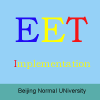-
Differentiating the learning environment
普通类 -
- 支持
- 批判
- 提问
- 解释
- 补充
- 删除
-
-
Differentiating the learning environment
DIFFERENTIATING INSTRUCTION benefits learners of various abilities, learning styles, and interests. It is often referred to solely as modifying the content, process activities, or products developed by the students. However, altering the learning environment is also a valuable method of providing a facilitative setting for effective instruction.-
Defining Differentiated Instruction
Differentiated instruction includes custom-designing instruction based on student needs. Learners are assessed on their readiness levels, multiple intelligence styles, and interests. These qualities are the driving factors in determining how to deliver appropriate instruction as all learners are unique. The curriculum content, learning activities, products, and learning environment are the four core elements that can be altered for differentiation.

Figure 1: Flow Chart of Differentiated Instruction-
Benefits of a Differentiated Learning Environment
Differentiating the learning environment incorporates both organizational structures (grouping strategies, schedules, rules, etc.) and sensory/language stimuli (Fogarty, 1997). According to brain-based learning theory, teaching focuses on "thinking" in a carefully designed setting rather than memorizing facts. Students will feel safe and comfortable regardless of individual differences. They will be open to risk-taking as the environment will be stimulating for learners to explore and inquire. Students become more motivated to participate in lessons in a dynamic classroom (Fogarty, 1997). In addition, the learning environment can provide the following (Maker & Nielson, 1996):
Opportunities for all types of students
Student autonomy and a sense of belonging
Use of a variety of learning resources
Challenge, variety, and reflective thinking
Various interactions among peers and mentors-
Fostering a Positive Classroom Climate
The teacher plays an integral role in creating a healthy learning environment. In addition to delivering instruction, the actions of the teacher has great impact on student development in the classroom. Teachers should focus on instructing the "whole" child, appreciating each child as an individual, and striving for student independence (Tomlinson, 1999).

Figure 2: Role of the Teacher in Creating a Positive Classroom-
Methods of Modifying the Learning Environment
Considerations: Several guiding principles must be considered when modifying a classroom (Maker & Nielson, 1996). A differentiated classroom must:
Be learner centered
Emphasize student independence
Exercise acceptance rather than judgement
Be flexible rather than rigid
Encourage high mobility
Be open to exploration and novel ideas
Enriching the Senses: Sensory enrichment can include both the equipment/supplies surrounding the learner and the activities that will invite students to use their senses. A variety of intriguing materials can foster student curiosity. Language stimulation should involve a wide span of print materials and oral language including song, conversations, debates, and dialogues (Fogarty, 1997).
Figure 3: Ways to Stimulate the Senses in the Classroom
Real-life Instructional Strategies
Learning centers are designated areas around the classroom that offer a collection of materials that learners can use to deepen their understanding of content. They can be designed based on readiness level or student learning styles. Center themes can include computer activities, research, art exploration, and real-world problem solving.

Tiered activities include offering students options in completing questions, tasks, and so on, of various ability levels. This ensures that students explore ideas at a level that builds on their prior knowledge and stimulates realistic growth. For example, students working in cooperative groups can choose to complete questions (A,B, or C) on a specific task with which they feel most comfortable.
Grouping strategies include grouping students in multiple ways, both homogenously and heterogenously. Grouping can be arranged according to student readiness level, interest, and/or learning styles.
Learning contracts are an agreement between the teacher and the student regarding how a student will complete tasks. This offers certain freedoms and choices on how a student learns the content. For example, the teacher and student could develop a contract at the beginning of a unit which includes independent study topics and assignments.-
Author
Marilaine deGuia M.S. Ed.
deGuia, M. (2004). Differentiating the learning environment. In B. Hoffman (Ed.), Encyclopedia of Educational Technology. -
-
- 标签:
- environment
- teacher
- differentiated
- student
- instruction
- activities
- learners
- differentiating
- students
- learning
- classroom
-
加入的知识群:



学习元评论 (0条)
聪明如你,不妨在这 发表你的看法与心得 ~